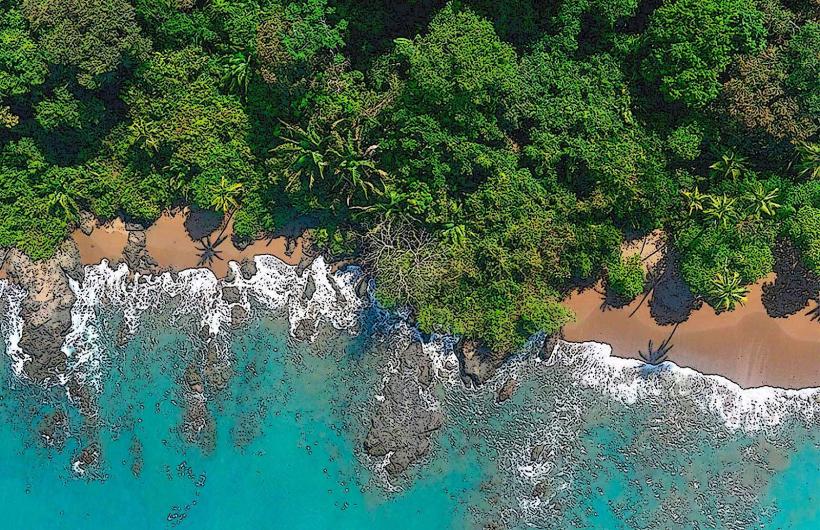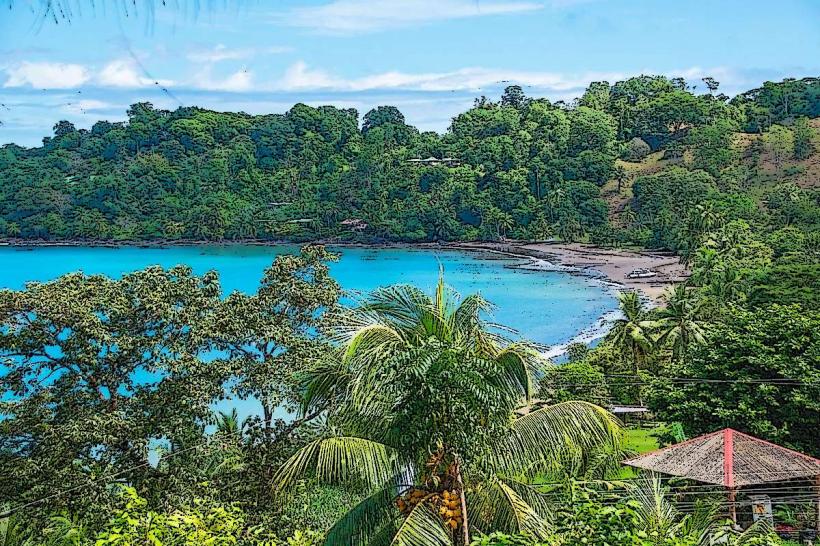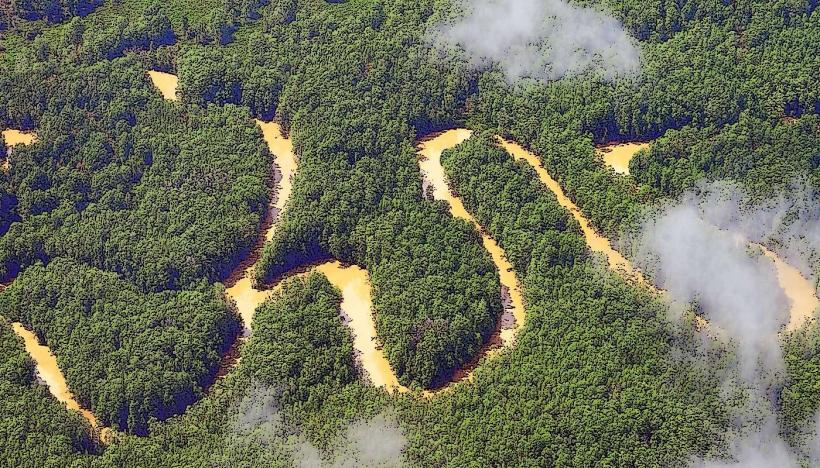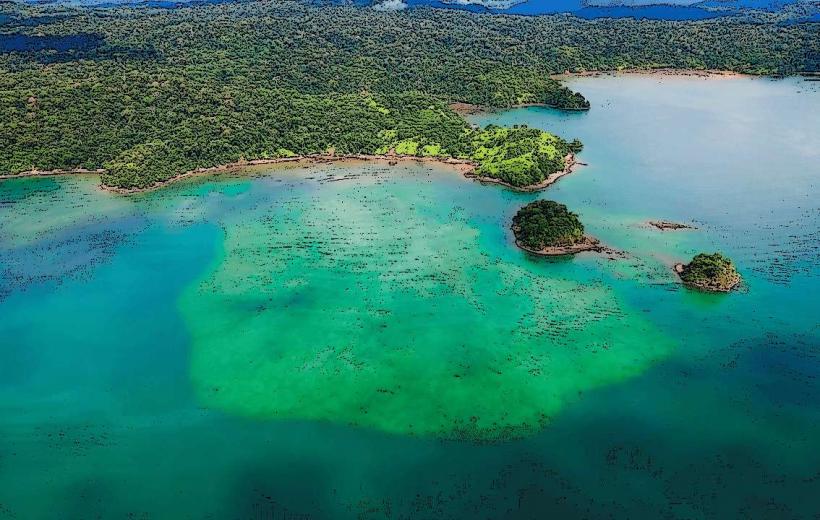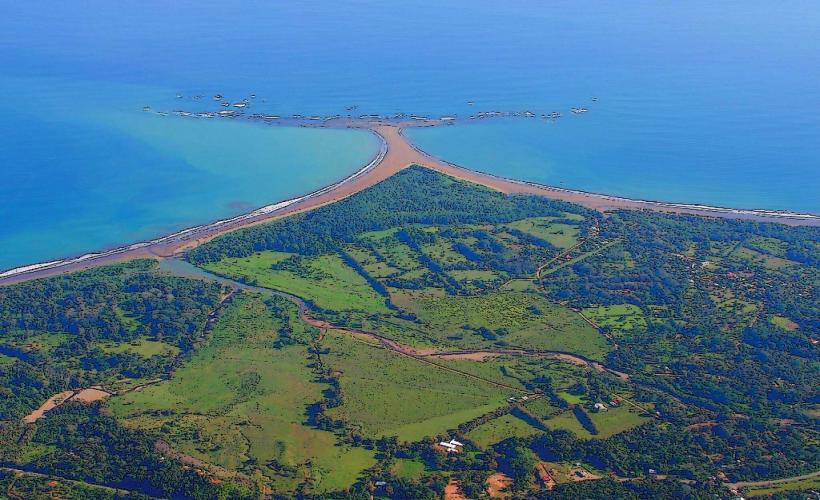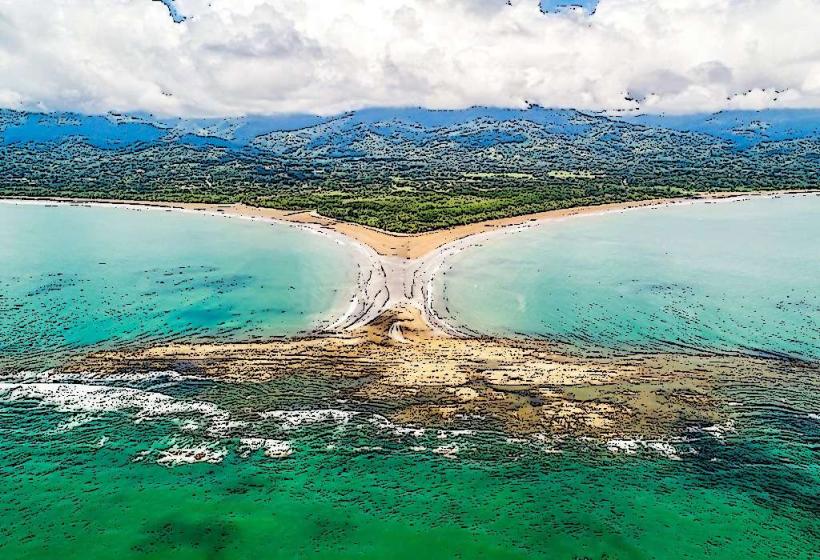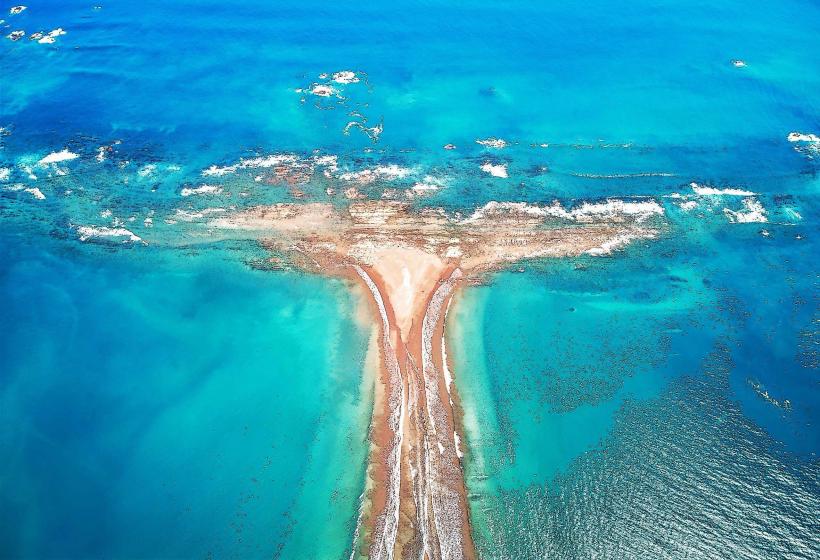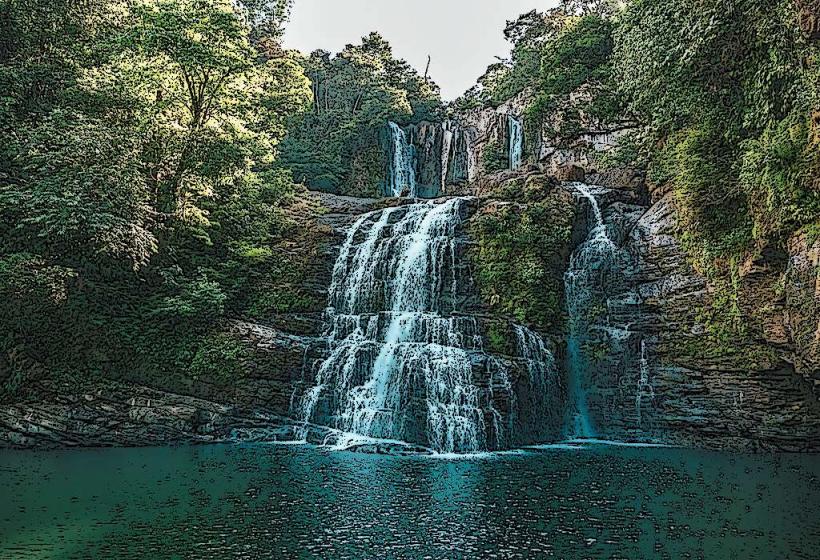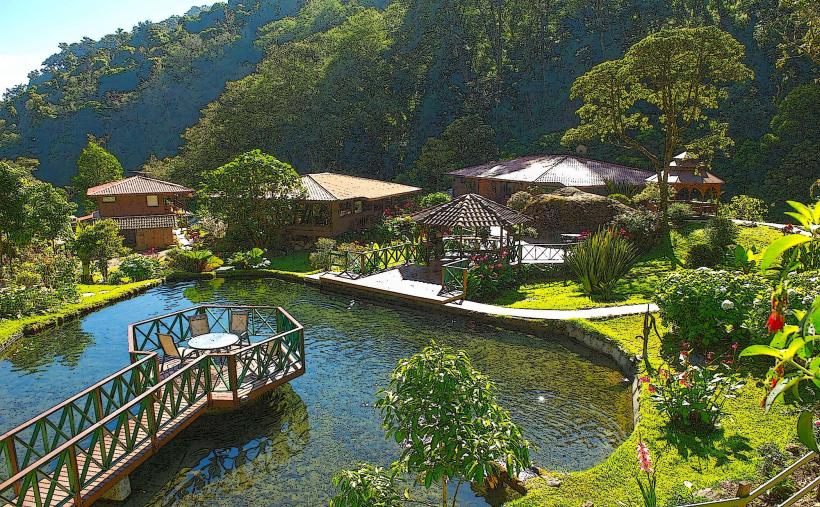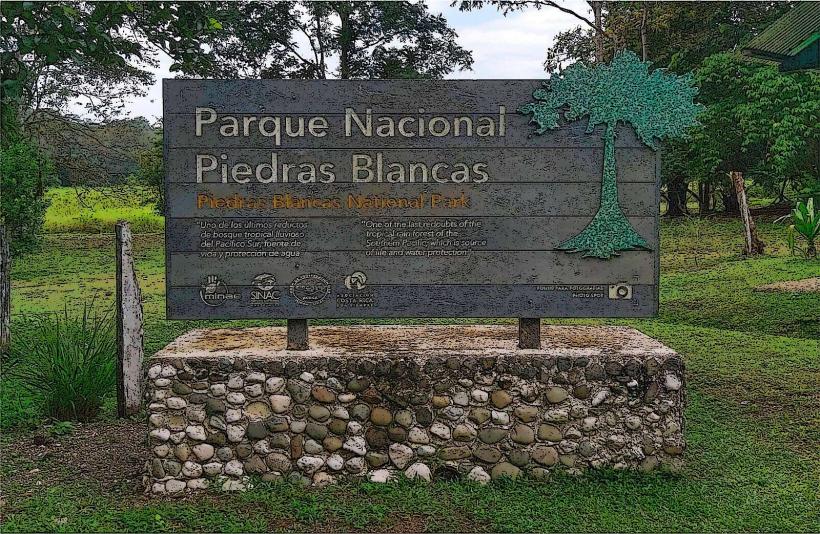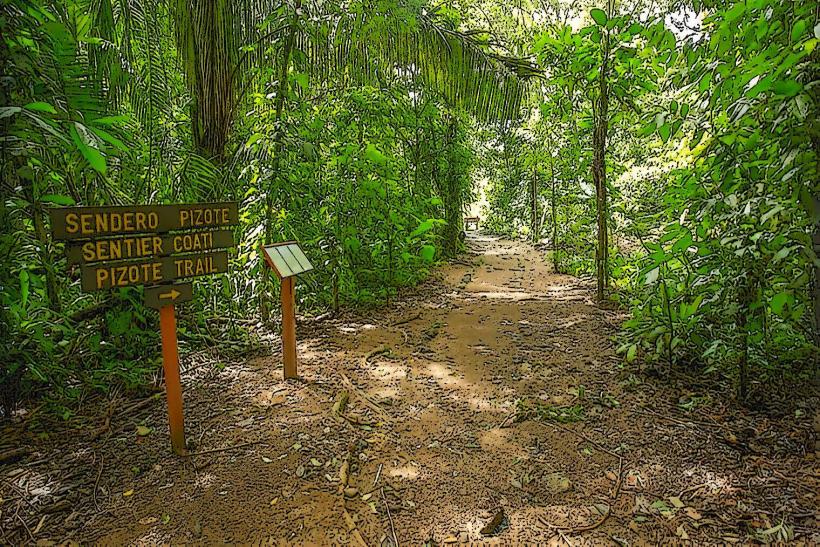Information
Landmark: Terraba-Sierpe WetlandsCity: Zona Sur
Country: Costa Rica
Continent: North America
The Terraba-Sierpe Wetlands (also known as the Terraba-Sierpe National Wetlands or Mangrove Wetlands) is a large and ecologically important protected area located in the southern Pacific region of Costa Rica, in Puntarenas Province. It encompasses the Sierpe River and the Terraba River, creating a vast wetland system that includes extensive mangrove forests, swamps, rivers, and coastal habitats. This area is a vital part of the country's natural heritage and is designated as a wetland of international importance under the Ramsar Convention.
Location and Access
- Location: The Terraba-Sierpe Wetlands are located in southern Costa Rica, along the Sierpe River and Terraba River, near the towns of Sierpe and Palmar Norte, within Puntarenas Province. The wetlands are part of the Osa Peninsula, a region renowned for its biodiversity and ecotourism attractions, including Corcovado National Park and Drake Bay.
- Geographic Coordinates: 8.728° N latitude, 83.617° W longitude.
- Access: The wetlands are accessible from Palmar Norte and Sierpe, which can be reached by car from San José (approximately 3-4 hours drive). Visitors can take boat tours to explore the wetlands and the surrounding rivers, with the Sierpe River serving as the primary access point for boat trips into the wetlands.
Ecological Significance
The Terraba-Sierpe Wetlands are considered one of the most important wetland ecosystems in Costa Rica due to their rich biodiversity and ecological services. They provide crucial habitat for a wide variety of species, and their unique landscapes include mangrove forests, flooded swamps, estuaries, and coastal habitats.
- Mangrove Ecosystems: The wetlands are home to extensive mangrove forests, which play a key role in stabilizing coastal environments and protecting the region from erosion. Mangroves also serve as important breeding grounds for fish and provide shelter for a variety of wildlife.
- Flooded Forests and Swamps: The wetlands contain large areas of flooded forests and swamps, which provide critical habitat for amphibians, reptiles, birds, and mammals. These habitats are particularly important during the rainy season when the water levels rise, flooding large areas of the landscape.
- Biodiversity Hotspot: The Terraba-Sierpe Wetlands are home to over 400 species of birds, including migratory species, waterfowl, and tropical birds. The wetlands also support a variety of amphibians, reptiles, and mammals, as well as hundreds of species of plants.
Flora and Fauna
Birdlife: The wetlands are a paradise for birdwatchers, as they host numerous species, including:
- Roseate Spoonbill
- Black-crowned Night Heron
- White Ibis
- Osprey
- Great Egret
- Kingfisher
- Northern Jacana
- Scarlet Macaw (in surrounding areas)
- Migratory Waterfowl (during migration seasons)
Mammals: The wetlands provide habitat for a range of mammals, some of which are threatened or elusive. These include:
- Jaguar (occasionally sighted in the region)
- Ocelot
- Baird's Tapir
- White-faced Capuchin Monkeys
- Howler Monkeys
- Coatis
- Paca
Reptiles and Amphibians: The wetlands also support a variety of reptiles and amphibians, including:
- American Crocodile (found in the rivers and estuaries)
- Boa Constrictor
- Iguanas
- Frogs (such as Red-eyed Tree Frogs)
Marine Life: Due to the proximity of the wetlands to the ocean, the rivers and coastal areas are home to various marine species, including:
- Mangrove Snapper
- Snook
- Barracuda
- Saltwater Fish
- Crabs (including the Mangrove Crab)
Key Features and Attractions
Boat Tours: One of the main ways to explore the Terraba-Sierpe Wetlands is by taking boat tours along the Sierpe River, which winds through the mangrove forests and flooded areas. These tours offer an opportunity to see wildlife, such as crocodiles, monkeys, and birds, while experiencing the tranquility of the wetlands.
- Wildlife Observation: The boat tours are led by knowledgeable guides who help spot wildlife and provide educational commentary about the wetlands' ecosystems and conservation efforts.
Mangrove Forests: The mangrove forests in the wetlands are one of the primary attractions. These unique coastal ecosystems are home to an array of wildlife and play a critical role in the local environment. Visitors can take boat trips to explore these tidal forests, which serve as important breeding grounds for fish and other aquatic species.
Estuaries and Coastal Areas: The wetlands extend into coastal areas that are rich in marine life. Visitors can enjoy exploring the estuaries, where the river meets the ocean, providing excellent opportunities for birdwatching and wildlife observation.
Water Activities: Aside from boat tours, visitors to the wetlands can enjoy activities such as kayaking and canoeing in the calm rivers and estuaries, allowing for a more intimate exploration of the wetland environment.
Ecotourism and Conservation: The Terraba-Sierpe Wetlands are an important area for ecotourism, offering guided tours that highlight the ecological and environmental significance of the wetlands. Tours also raise awareness about wetland conservation and the need to protect these fragile ecosystems.
Conservation Efforts
The Terraba-Sierpe Wetlands are a designated Ramsar Wetland of International Importance, meaning they are recognized globally for their ecological value. The area has been protected to ensure the preservation of its unique ecosystems and biodiversity. Local organizations and conservationists are actively working to mitigate threats to the wetlands, including deforestation, pollution, and climate change.
- Protection and Education: Conservation efforts include education programs for local communities and tourists, as well as sustainable tourism initiatives aimed at preserving the integrity of the wetlands. The Costa Rican government, alongside NGOs and local organizations, supports conservation initiatives in the area.
- Habitat Restoration: Efforts to restore degraded areas of the wetlands focus on protecting mangrove forests and improving water quality, as well as reintroducing native species to ensure the health of the ecosystem.
Best Time to Visit
- Dry Season (December to April): The best time to visit the Terraba-Sierpe Wetlands is during the dry season (from December to April), when the weather is sunny and pleasant. This is also the time when birdwatching is particularly rewarding, as migratory birds are more abundant, and the wildlife is more easily spotted.
- Rainy Season (May to November): The rainy season (May to November) brings lush vegetation and vibrant ecosystems, but visitors should be prepared for frequent rain showers. The wet season also sees higher water levels, which may affect accessibility to some areas, though it also provides a unique opportunity to see the wetlands in full flow.
Visitor Information
- Entry Fees: There may be a small entrance fee for accessing the wetlands, which helps fund conservation efforts and maintenance of the area.
- Guided Tours: To fully experience the wetland ecosystem, guided tours are recommended. These tours are typically led by knowledgeable local guides who can provide insights into the history, ecology, and conservation of the wetlands.
- Facilities: Basic facilities such as restrooms and visitor centers are available in the nearby towns of Sierpe and Palmar Norte. For more comprehensive accommodations, visitors can stay in eco-lodges or hotels in Dominical and Uvita.
Conclusion
The Terraba-Sierpe Wetlands are an exceptional natural area in Costa Rica, offering rich biodiversity, stunning landscapes, and unique opportunities for ecotourism and wildlife observation. Whether you're interested in exploring the mangrove forests, observing birdlife, or learning about wetland conservation, the wetlands are a must-visit destination for nature lovers and adventurers alike. The area plays a crucial role in protecting coastal ecosystems and supports a wide range of plant and animal species, making it a key site for both environmental protection and sustainable tourism.

